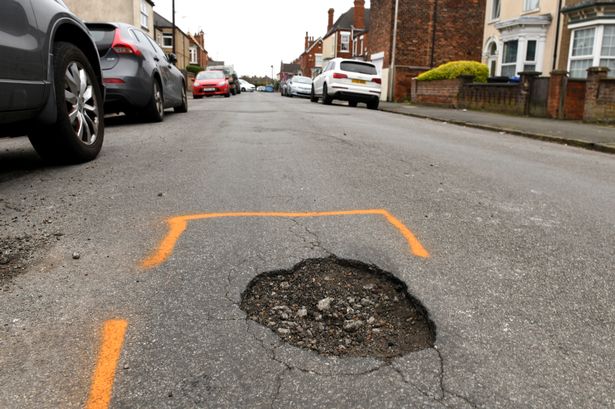The deteriorating state of Britain’s roads has become a pervasive issue, impacting drivers, cyclists, and pedestrians alike. A recent Freedom of Information request submitted to local authorities across the country has revealed the alarming extent of this problem, highlighting the sheer volume of pothole reports received within a single year. Between January and November 2024, a staggering 952,064 pothole reports were logged, equating to an average of 3,122 reports every single day. This overwhelming figure paints a stark picture of the widespread damage plaguing the nation’s road network and underscores the urgent need for effective and sustainable solutions. The sheer number of reports suggests not only a reactive approach to road maintenance, where repairs are carried out only after damage has occurred, but also a potential underreporting of the issue, as some individuals may simply choose to navigate around potholes rather than formally reporting them.
This influx of pothole reports presents a significant challenge for local authorities, who are often constrained by limited budgets and resources. The constant need for reactive repairs diverts funds away from preventative maintenance, creating a vicious cycle of deterioration and patching. Furthermore, the administrative burden of processing thousands of reports each day adds another layer of complexity to the already strained resources of local councils. The sheer scale of the problem necessitates a strategic shift towards proactive maintenance programs, investing in long-term solutions that address the root causes of pothole formation rather than simply addressing the symptoms. This includes implementing more robust road construction techniques, utilizing advanced materials designed for increased durability and longevity, and embracing preventative maintenance strategies that identify and address potential issues before they escalate into significant road defects.
The consequences of neglected road maintenance extend far beyond mere inconvenience. Potholes pose a genuine safety hazard to all road users. For drivers, they can cause tire blowouts, wheel damage, and suspension problems, potentially leading to loss of control and accidents. Cyclists are particularly vulnerable, as potholes can cause serious injuries from falls or collisions. Pedestrians, too, face risks from tripping hazards, especially in poorly lit areas where potholes may be difficult to see. The cumulative effect of these individual risks translates into a substantial societal cost, encompassing vehicle repairs, medical expenses, lost productivity, and the burden on emergency services.
The economic implications of deteriorating roads are substantial and multifaceted. The costs associated with vehicle repairs due to pothole damage place a significant financial burden on individuals and businesses. Furthermore, the poor condition of roads can negatively impact local economies by hindering transportation and discouraging investment. Businesses may face increased delivery times and higher transportation costs, while potential investors might be deterred by the perception of neglected infrastructure. Addressing the pothole problem is therefore not simply a matter of road safety, but also a crucial investment in economic stability and growth. Implementing a comprehensive and long-term approach to road maintenance can contribute to a more robust and resilient economy.
Moving forward, a comprehensive and multi-pronged approach is necessary to tackle the pervasive issue of potholes effectively. This involves a shift from reactive repairs to proactive maintenance strategies, focusing on preventing potholes from forming in the first place. Investing in advanced road construction techniques and materials that offer greater durability and resistance to wear and tear is essential. This includes exploring innovative solutions such as self-healing asphalt and utilizing data-driven approaches to identify areas prone to pothole formation. Furthermore, empowering local authorities with adequate funding and resources is crucial to enable them to implement and sustain effective maintenance programs.
Equally important is fostering greater public awareness and engagement. Encouraging citizens to report potholes promptly and accurately can help local authorities prioritize repairs and allocate resources efficiently. Public education campaigns can also play a vital role in raising awareness about the importance of responsible road usage, such as avoiding overloading vehicles and adhering to speed limits, both of which contribute to road wear and tear. By fostering a collaborative approach between local authorities, communities, and the government, a sustainable solution to the pothole crisis can be achieved, ensuring safer and more reliable roads for all. This collective effort will contribute to a more efficient transportation network, a stronger economy, and an enhanced quality of life for all road users.














